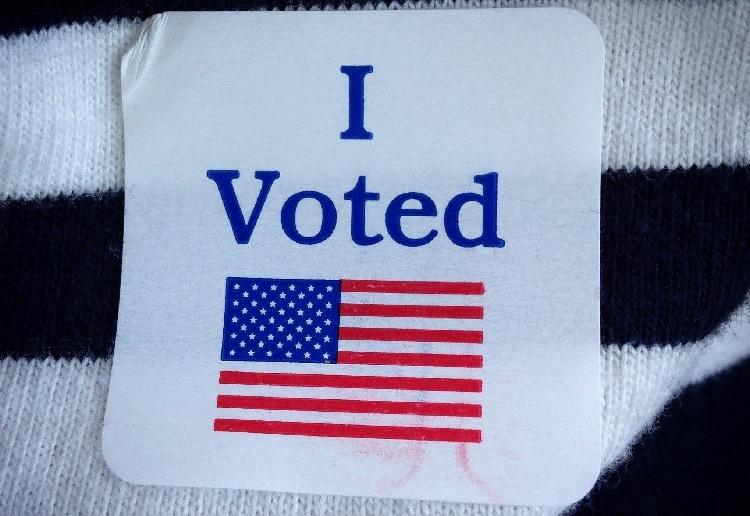Blue wave fails to wipe out Republicans
Posted By Tom Switzer on November 8, 2018 @ 06:00

Not so long ago, the media consensus was that the Democrats would ride a ‘wave’ akin to the Republican routs in 1994 and 2010. Back then, the party under Bill Clinton and Barack Obama had spectacularly lost control of both chambers of Congress.
Shell-shocked Democrats emerged from those midterm elections in very bad shape, and it was widely believed Republicans would endure the same kind of humiliation in 2018.
After all, the strong turnout among Democrats during the primaries suggested a more motivated base than their Republican rivals. Democrats were raising money at record levels. More than 40 GOP House incumbents had retired—most from congressional districts where President Donald Trump’s approval ratings were low. The Mueller probe into allegations of collusion with Russia was handing out indictments of former Trump advisers.
Moreover, history showed that, with rare exceptions, the president’s party suffers big setbacks in the first midterm elections of his tenure. Some seasoned observers of Washington politics believed Democrats could win the Senate.
This week was the American electorate’s first opportunity to render a national verdict on Trump’s presidency, and the national vote did not follow the aforementioned script. Turnout and enthusiasm were high, but the results were mixed: although the Democrats have won enough seats to regain the House of Representatives, Republicans have strengthened their hold on the Senate. The result just confirms and extends America’s current political divisions.
What happened? How to account for the mixed midterm results?
Start with the controversy over Brett Kavanaugh. By common consent, even conservatives and Republicans who didn’t much like Trump unified behind his Supreme Court nominee. In their view, Kavanaugh had been subjected to the most unfair and baseless scrutiny over alleged sexual assaults from 35 years ago. Suddenly, the enthusiasm gap closed.
Then there’s the divided nature of America: the rising partisan hostility; the widening divisions between urban and rural America; the record gender gap; the fault line of education.
All this was on display this week. Women, metropolitan voters, and university graduates are far more likely to vote Democrat; men, remote and regional Americans, and people without a college degree are more likely to support Trump.
Nothing demonstrates the divisions better than the nature of the House and Senate races. Although his name wasn’t on the ballot, Trump tried to nationalise the midterms by running hard on import tariffs and especially tough border controls. That helped in states where Senate races were conducted. However, it backfired in House races.
Indeed, what worked for Republicans in motivating the conservative base in red states—and even a few Democrat states (such as Indiana, Missouri and North Dakota)—boomeranged in urban districts where the House majority was determined. These are swing electorates in which moderate and college-educated Republicans and independents determine who wins.
There are anywhere between 30 and 40 of these seats, and they are primarily based in the suburbs of Philadelphia, Denver, northern Virginia and Miami-Dade.
Think of these seats as America’s versions of Wentworth, the inner-city Sydney seat that recently voted out the Liberals. Nativism does not resonate here. In the 2016 presidential election, Hillary Clinton carried 23 of these moderate Republican seats; and most of them—and some more—voted for the Democrats this week.
What lies ahead?
First, Trump is unlikely to be fazed by these results. If anything, he may well double down on his nativist message, because it didn’t hurt the Republican campaigns across many states. And it is the states that determine the electoral-college vote, which in turn determines the presidential election.
True, Republicans were helped in 2018 because many Democrat senators were running in pro-Trump states. But ‘America First’—taken together with tax reform and deregulation, which helped create today’s booming economy and record-low unemployment—resonated in many parts of conservative America.
Although Ronald Reagan would be aghast at Trump’s protectionism and exclusionary nativism, the GOP is now Trump’s party. The Donald shouldn’t be underestimated in 2020.
Second, in the wake of their House victory, Democrats are likely to be more confrontational and subject Trump to more scrutiny. However, there is a danger in over-interpreting their mandate. They received none. At best, they were merely rewarded for acting as the people’s proxy in placing checks and balances on Trump’s presidency.
Moreover, Democrats lack dominant national leaders and have no clear agenda beyond bagging Trump to take into the 2020 presidential election.
Finally, get ready for Washington to become even more partisan and polarising in coming years. Robert Gates once said [1] the ‘greatest national security threat’ to the US ‘is the two square miles that encompasses the Capitol Building and the White House’.
The former defence secretary made those remarks in 2014, well before Trump arrived on the scene. If he thought congressional gridlock and infighting was a big problem then, it is bound to become an even bigger problem during the next two years.
Hyper-partisanship, toxic polarisation, lack of bipartisanship—the midterm elections have reaffirmed these trends.
Article printed from The Strategist: https://aspistrategist.ru
URL to article: /blue-wave-fails-to-wipe-out-republicans/
URLs in this post:
[1] once said: https://thehill.com/blogs/blog-briefing-room/205797-gates-biggest-threat-to-america-is-government-dysfunction
Click here to print.